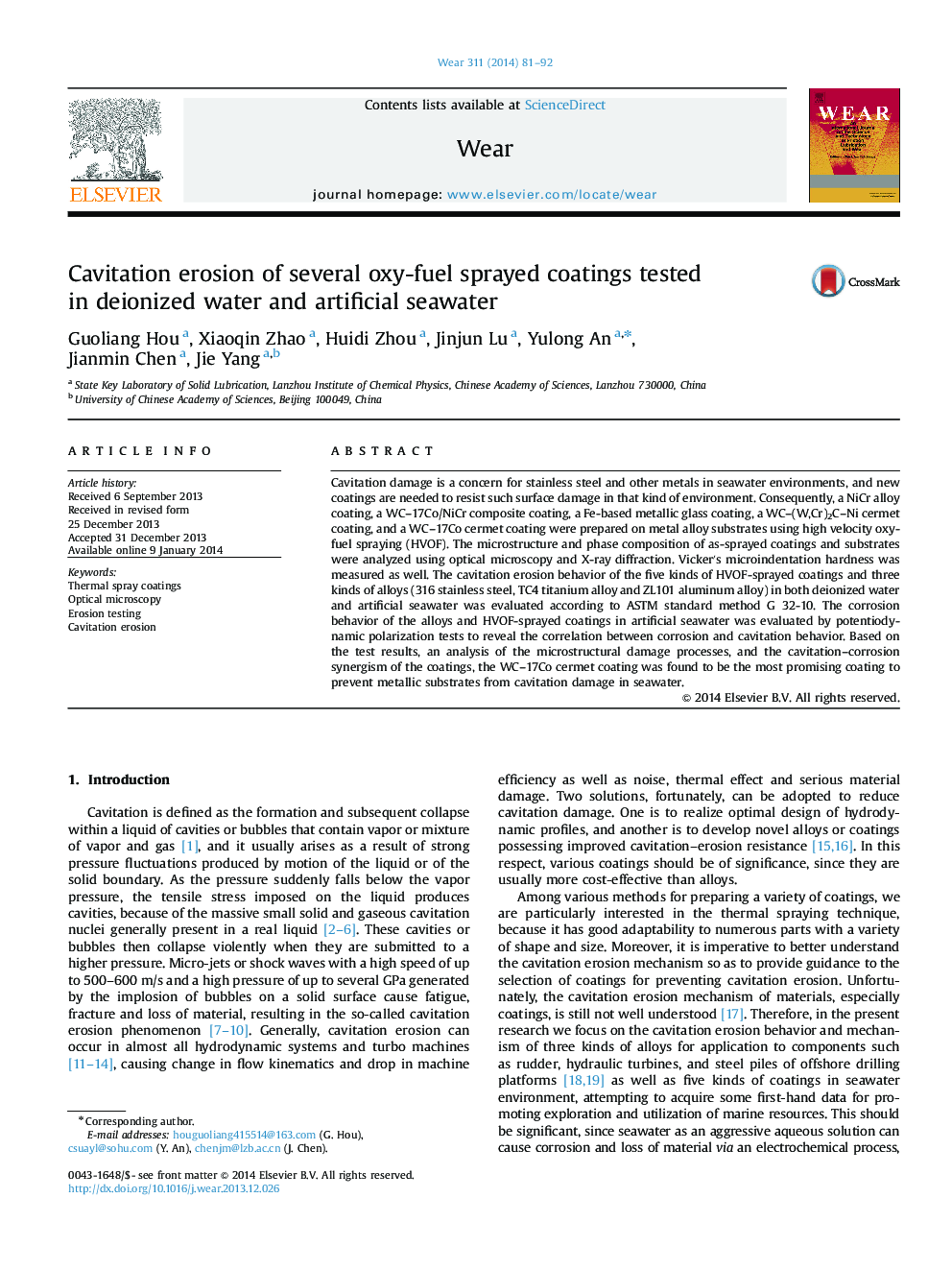| کد مقاله | کد نشریه | سال انتشار | مقاله انگلیسی | نسخه تمام متن |
|---|---|---|---|---|
| 617347 | 1454991 | 2014 | 12 صفحه PDF | دانلود رایگان |
• Metallographic structure has an important effect on cavitation erosion behavior of alloys.
• Porosity and hardness affect cavitation erosion behavior of HVOF-sprayed coatings to some extent.
• Fe-based metallic glass coating shows good cavitation erosion behavior in deionized water.
• Chemical action of artificial seawater affects cavitation erosion behavior of various materials.
• WC–17Co cermet coating has the best cavitation erosion resistance in artificial seawater.
Cavitation damage is a concern for stainless steel and other metals in seawater environments, and new coatings are needed to resist such surface damage in that kind of environment. Consequently, a NiCr alloy coating, a WC–17Co/NiCr composite coating, a Fe-based metallic glass coating, a WC–(W,Cr)2C–Ni cermet coating, and a WC–17Co cermet coating were prepared on metal alloy substrates using high velocity oxy-fuel spraying (HVOF). The microstructure and phase composition of as-sprayed coatings and substrates were analyzed using optical microscopy and X-ray diffraction. Vicker's microindentation hardness was measured as well. The cavitation erosion behavior of the five kinds of HVOF-sprayed coatings and three kinds of alloys (316 stainless steel, TC4 titanium alloy and ZL101 aluminum alloy) in both deionized water and artificial seawater was evaluated according to ASTM standard method G 32-10. The corrosion behavior of the alloys and HVOF-sprayed coatings in artificial seawater was evaluated by potentiodynamic polarization tests to reveal the correlation between corrosion and cavitation behavior. Based on the test results, an analysis of the microstructural damage processes, and the cavitation–corrosion synergism of the coatings, the WC–17Co cermet coating was found to be the most promising coating to prevent metallic substrates from cavitation damage in seawater.
Journal: Wear - Volume 311, Issues 1–2, 15 March 2014, Pages 81–92
